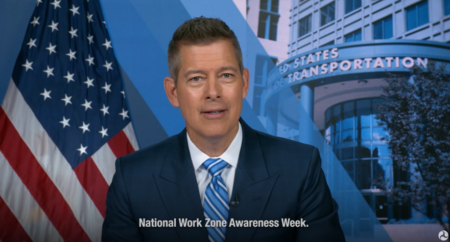The Wisconsin Department of Transportation (WisDOT) is hailing the success of its queue warning systems (QWS) in reducing collisions by warning drivers of highway traffic slowdowns well in advance.
Frequently deployed in the vicinity of highway work zones, the goal of WisDOT’s QWS is to alert motorists of possible traffic backups ahead to help prevent rear-end collisions. The QWS configuration used in Wisconsin is typically a series of portable variable message signs (PVMS) equipped with sensors.
These signs are placed at the start of the work zone lane closure where traffic queues typically begin. Subsequent PVMSs are then placed every mile upstream, going as far back as the traffic queue is likely to extend. For example, the I-39 project in 2017 had 11 PVMSs in the southbound direction, to provide adequate coverage on the busy highway. As traffic entering the work zone slows and begins to queue, the sensor detects falling vehicle speeds. Once the sensor detects that traffic is moving at 40mph (64km/h) or slower, it triggers the next PVMS upstream, to send a message to alert drivers of slow or stopped traffic ahead. And if traffic continues to back up, PVMSs farther upstream alert drivers. These warnings are intended to heighten driver awareness and reduce speed ahead of the traffic backup.
WisDOT started using QWS as part of a 2016 pilot project, and the technology has since taken hold and seen positive results. A QWS was deployed in 2017 to help improve traffic safety near an I-43 construction zone in Manitowoc County. The highway section served by the QWS saw a 15% decrease in crashes and a 63% reduction in injury crashes when compared to the same section occurred the previous year. Plans are already in place for the 2018 construction season, to use a QWS along I-39/90/94 in Columbia County. There will also be several hybrid QWSs in southeastern Wisconsin, consisting of PCMSs, sensors and a ‘zipper merge’ system to optimize traffic flow.
Choosing the best use of QWS resources is the job of the Wisconsin Transportation Management Plan decision support system (DSS), which is funded in part by a 2016 Federal Highway Administration (FHWA) grant. The system makes recommendations based on project area crash history, and by observing highway designs, including curves, hills and valleys that may restrict a driver’s line of sight downstream. Future lane closures may also factor in the recommendations that are presented for consideration to WisDOT’s project designers and its Bureau of Traffic Operations.




